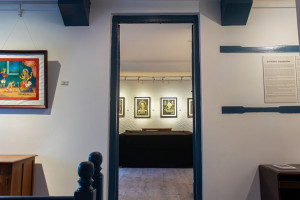Arts
An assemblage of artistic expressions at Takpa Gallery
The exhibition ‘The Next 2024’ features twenty-three young artists who have created portraits of the world as they view it by fusing themes of identity, culture, and lived experience.
Anish Ghimire
To provide young artists a platform where they can showcase their artistic talent, the exhibition ‘The Next 2024’ is on display at Takpa Gallery, Lazimpat. Flaunting the creations of 23 emerging artists, this exhibition features a variety of artistic expressions, including drawing, painting, mixed media, ceramics and sculpture. It unites individuals currently studying or graduating from various art colleges in Nepal, providing a stage for them to explore the inquiries and contemplations of the upcoming generation of Nepali artists.
Curator Roshan Bhandari, who completed his undergraduate studies in painting at Pune University’s Bharati Vidhyapeeth College of Arts in India, said, “A common notion among us is to dismiss any works of young artists, thinking they don’t know what they are doing.” Through this exhibition, he wants to challenge such thinking. He believes that to showcase one’s creativity or to tell a good story, age doesn’t matter. “So, in this exhibition, my main motive is to let these art students have a platform where they can unleash their creativity. And also, to let me have the opportunity to guide them in a proper manner.” Bhandari added.
The diverse art forms create a pleasing spectacle at the gallery. After chatting with a few students, I learned that through colours, textures, text and material, they have invoked their particular ways of viewing the world. One such student, Nischal KC, walked me to his installation titled, ‘Contemplation’, and said, “In my art, I’ve employed water as a metaphor symbolising the powerful emotions and thoughts that can engulf us. The moon serves as a representation of the tranquillity and calmness the submerged figure seeks, while the fish embody small moments of joy.”
Looking at the artwork, one can see that the figure seems motionless, capturing the stillness influenced by intense emotions. Through this collection, KC has aimed to portray the intricate emotional landscape that exists within an individual. KC serves as a coordinator at the curator’s studio, ‘The Studio of Roshan Bhandari’.

Next, I was shown to Gaurab Dongol’s nook, where panels of drawings from his comic book are stored. The work, written and illustrated by him, is titled, ‘Dreams’, and Dongol has a good reason behind it, “Parents frequently burden their kids with tight expectations by pushing their goals on them. In my piece ‘Dream’, a young high school guy aspires to defy the strict social conventions that have been placed upon him.” For this, he has used pen and ink with added digital screen tones, drawing inspiration from Japanese Mangas and Western comics. He continued, “I have drawn inspiration from real-life situations among recent graduates where their parents want them to choose a career that they find respectable and desirable.” Dongol has illustrated the disparity between the perspectives of parents and children through the panels of drawings.
The other very captivating sight at the gallery is Yugdas Manandhar’s works. Out of the six of his crafts, one of them titled, ‘Starry Night Over Kathmandu’ caught my eye. As a fanatic of Vincent Van Gogh, who originally painted ‘The Starry Night’ in 1889, I was more than happy to gaze for a prolonged period at a different version of the same painting. The curator, Bhandari, spoke on behalf of Manandhar, as the latter has difficulty communicating verbally.
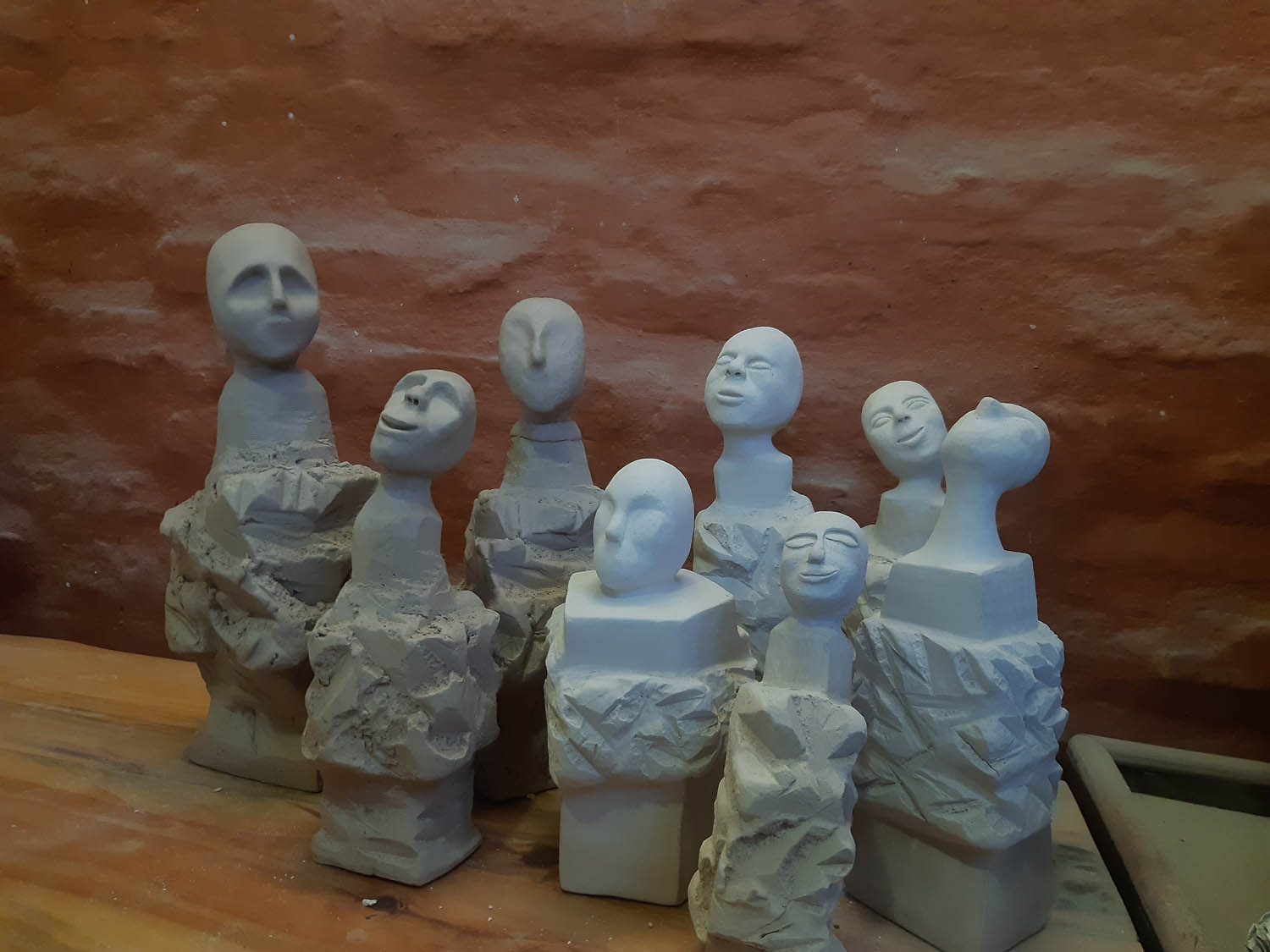
“In ‘A Starry Night Over Kathmandu’, the sky over Kathmandu serves as a backdrop as seen through the artistic eye of Vincent Van Gogh. Through this, Manandhar seeks to place himself within Van Gogh’s psyche and see the surroundings through his perspective.” explained Bhandari.
The other one, titled, ‘The Boundless Human Emotion’, pays homage to the theme within the film ‘Interstellar’. One of the greatest films ever made, it uses a science fiction style to portray the tale of a father and daughter’s love. The father manages to communicate with his daughter, who lives far away in both space and time, even at his lowest point—when a black hole swallows him.
‘Dreaming Of Adventure’, Bhandari explained, stems from his ambition to go on an independent motorbike road trip. “It represents liberation and fulfilment to him. The items in the composition serve as a visual representation of the equipment he would bring along for the journey.” As Bhandari explained this, Manandhar stood by our side, carefully studying our faces.
According to Bhandari, many galleries and studios today refrain from providing young artists a space. “Which is why we see a lack of newness in our contemporary art scene.” Because there isn’t ample room to grow for the newcomers, they cannot confidently express their unique ideas and spill them on a canvas. “In the past few years, we have rarely seen a new bunch of artists coming through, which is a very worrying scenario,” he added.
So, when Bhandari thought of curating this exhibition, he contacted many young artists and students in the field and informed them about his idea. To his dismay, most of the young artists he knew had either already left the profession, the country, or started another, much more lucrative career. “One of them, whom I knew well, had returned back to the village to plough the fields,” he shared.
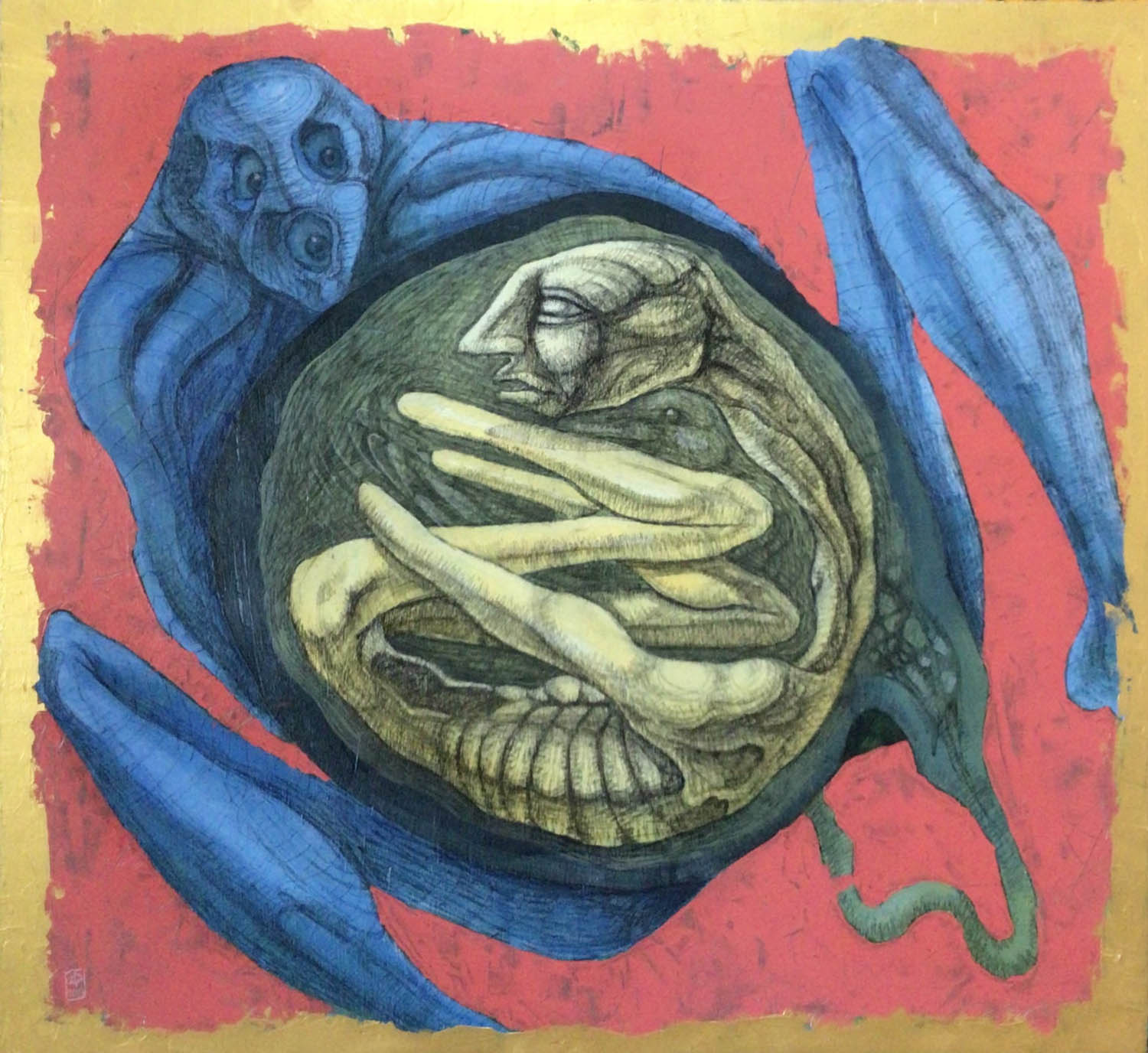
This made Bhandari push even harder to make the exhibition happen. “When I informed the students, I told them whatever artform you can make, bring it to me, let’s make this happen,” and this is evident in the exhibition. The diversity of the students and their peculiar ideas have been properly reflected in their works.
The young artists have created portraits of the world as they view it by fusing themes of identity, culture, and lived experience. For most, the works take a personal, introspective note to draw the viewers where they stand. By employing subtle observation and symbolic elements, artists encourage viewers to consider their own thoughts and ideas.
Ceramic artist Sumita Baral has on show a collection of sculptures called ‘Emotive Imprisonment’, which, according to her, illustrates the universal humanistic spirit that exists within all people regardless of their differences in nationality, ethnicity, or religion, among other things. The simple figures with different emotions peel back these surficial layers to reveal the sameness underneath that connects us all.
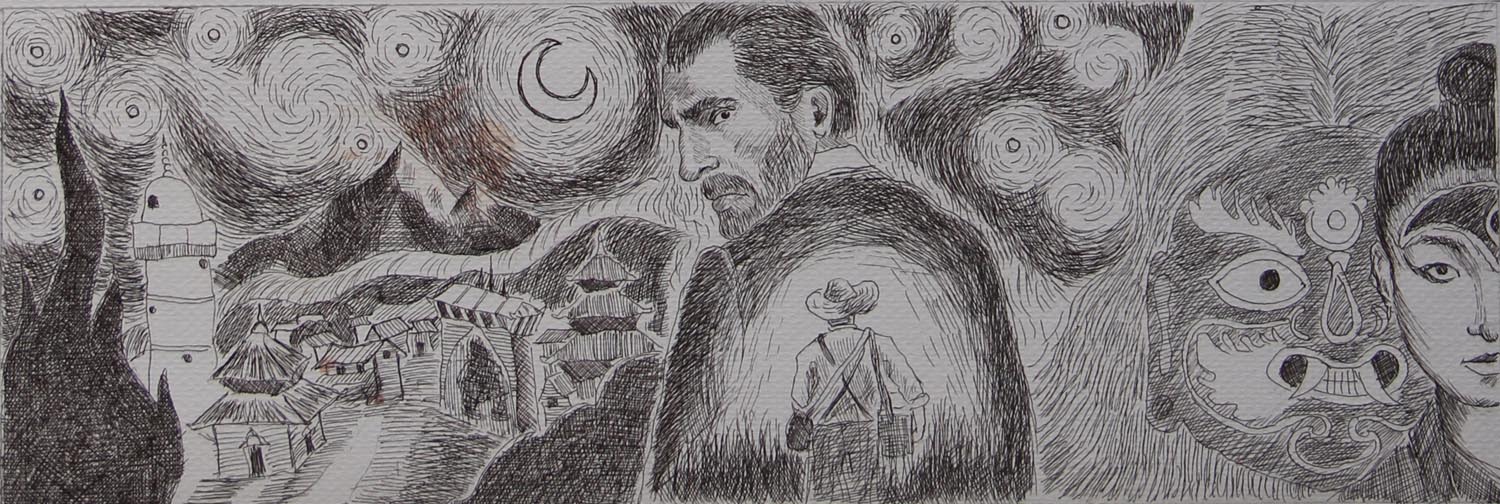
Another peculiar work caught my eye as I was scanning the gallery. Titled ‘Inner Visage’, the theme of this artwork can resonate with a lot of kids who are slowly starting to embrace adulthood. This was brought to life by Sushant Shree Rajbhandari, a multidisciplinary artist based in Kathmandu. His portfolio encompasses murals, experiential and interactive installations, and performances. The themes in his work explore symbolism of the human psyche, spirituality, and masculine and feminine energies, among others.
‘Inner Visage’ explores the dynamic interplay of inner archetypes—the budding inner child and the challenged inner adult. Positioned at the centre, the inner child is in a state of growth, while the adult grapples with containment, aiming for harmony and integration. A golden line serves as a symbolic boundary, nurturing positive growth in this internal dialogue.
Like Dongol, KC, Manandhar, Baral and Rajbhandari, there are numerous other aspiring young students who have a knack for viewing the world in an artistic way. Twenty-three such artists’ works are on display at the gallery until February 4. “To see these kids become so vocal in expressing themselves, it really makes me happy. And I would also like to thank Takpa Gallery for providing a much-needed platform for them,” said a grateful Bhandari. Calling himself a struggling artist as well, he takes pride in having an opportunity to struggle together with these young artists.
The Next 2024
Where: Takpa Gallery, Lazimpat, Kathmandu
Timings: 11:00 am to 6:00 pm, closed on Monday
Until February 4




 7.12°C Kathmandu
7.12°C Kathmandu

%20(1).jpg&w=200&height=120)
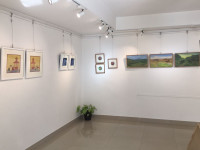
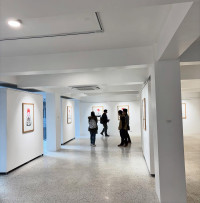
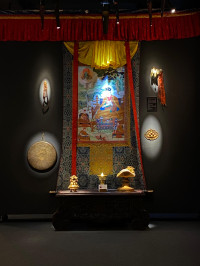
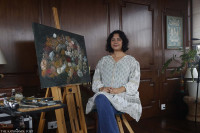
%20(1).jpg&w=300&height=200)
